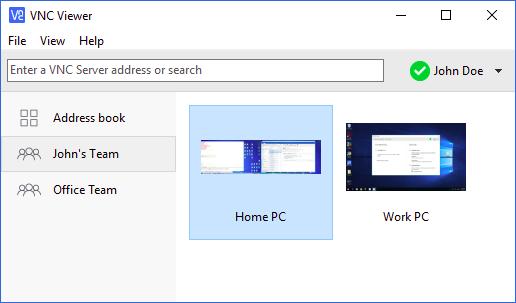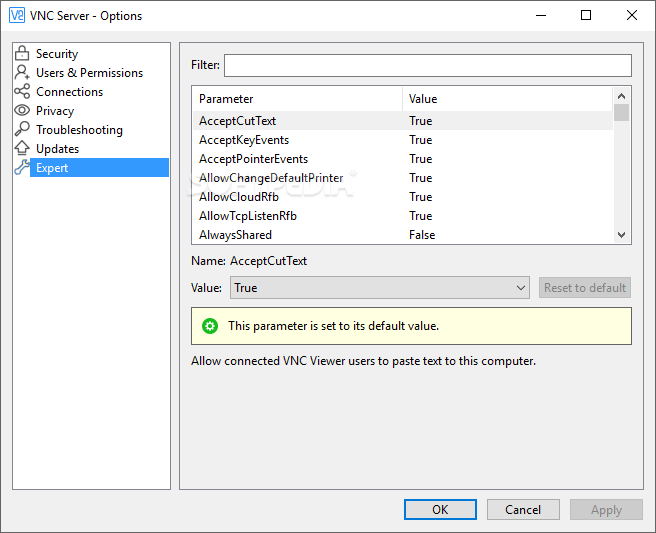

- #Windows 10 vnc server how to#
- #Windows 10 vnc server install#
- #Windows 10 vnc server software#
- #Windows 10 vnc server password#
- #Windows 10 vnc server download#
#Windows 10 vnc server how to#
We’ll cover this in a little bit more detail further in this article.Īs such, before proceeding and looking at how to create a secure connection, let’s test the VNC server. Since we’re just testing now, we added -localhost no to be able to access the server via VNC from the outside. It is fast, stable, and easy to use.īy default, TigerVNC accepts connection only from 127.0.0.1 or localhost, for security reasons.
#Windows 10 vnc server install#
They include GNOME desktop, KDE Plasma Desktop, Mate Desktop, Budgie Desktop, Xfce/Xubuntu Desktop, Cinnamon Desktop, and many more.įor this particular post, we will install the XFCE desktop environment. However, that doesn’t mean you can install one.Īs of writing this post, there are several Linux desktop environments available for you to install. On booting up, you will get a command-line interface to execute your commands. If you intend to connect via VNC to an Ubuntu 20.04 server, then you’ll notice that the server doesn’t come with a preinstalled Desktop Environment. If you’re on Linux then I prefer Remmina.
#Windows 10 vnc server download#
You can choose your OS and download Real VNC Viewer here. It’s available for Windows, macOS, Linux, Android, and others. The one I’m using in this tutorial is Real VNC Viewer. There are some popular VNC viewers that you can choose from.

#Windows 10 vnc server software#
A VNC Client (also called VNC Viewer) which is the software that you’ll run on your local machine and will enable you to control your VNC server remotely.You can see our tutorial on creating a sudo user in Ubuntu 20.04 if you need to. Acting as a non-root sudo user for security reasons.A machine running Ubuntu 20.04 to which we’ll connect.Configure VNC to Use KDE Plasma Desktop.Configuring VNC to Use Other Desktop Environments (And Switching Between Them).

#Windows 10 vnc server password#
The only drawback with VNC Deployment Tool is it won’t work out of the box on Windows 7 because the user account password must not be blank and the remote registry services must be running. It is also possible to add a list of credentials in case you need to login with a different user account with administrator privileges to remotely install the VNC. You can scan the whole network for available computers to install/uninstall/edit VNC, stop/start VNC services, selecting custom VNC server installer and password to connect. If you’re looking for an enterprise grade of VNC deployment, RealVNC has their own software called VNC Deployment Tool which is the easiest to use but it requires licensing and won’t work on the free version. Make sure you click the Direct Download Link. The official website of PushVNC is no longer available but can be downloaded from CNET Download portal. PushVNC installs RealVNC 4.1.1 to the remote computer and one thing you should know is the version used is vulnerable to the remote authentication bypass exploit. The requirements are the same as Windows 7 where the user account must have a password and firewall is not blocking the connection. By default PushVNC will automatically be removed when you disconnect but you can keep it on the remote computer by ticking the “Leave Service” checkbox. All it needs is the target’s IP address, username and password, and click the Push button. Not to be confused with pushVNC7 that we’ve mentioned above, PushVNC only works on Windows XP. There are quite a number of scripts such as FastPush that can remotely install VNC server to XP machines but we will feature PushVNC because it is easiest to use.


 0 kommentar(er)
0 kommentar(er)
